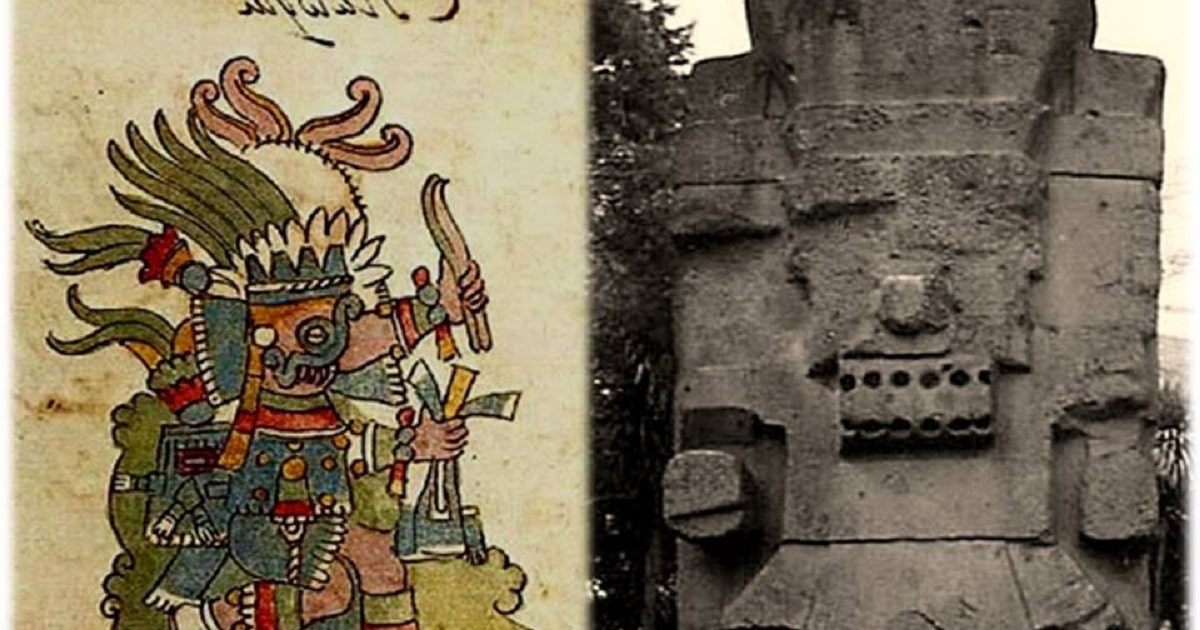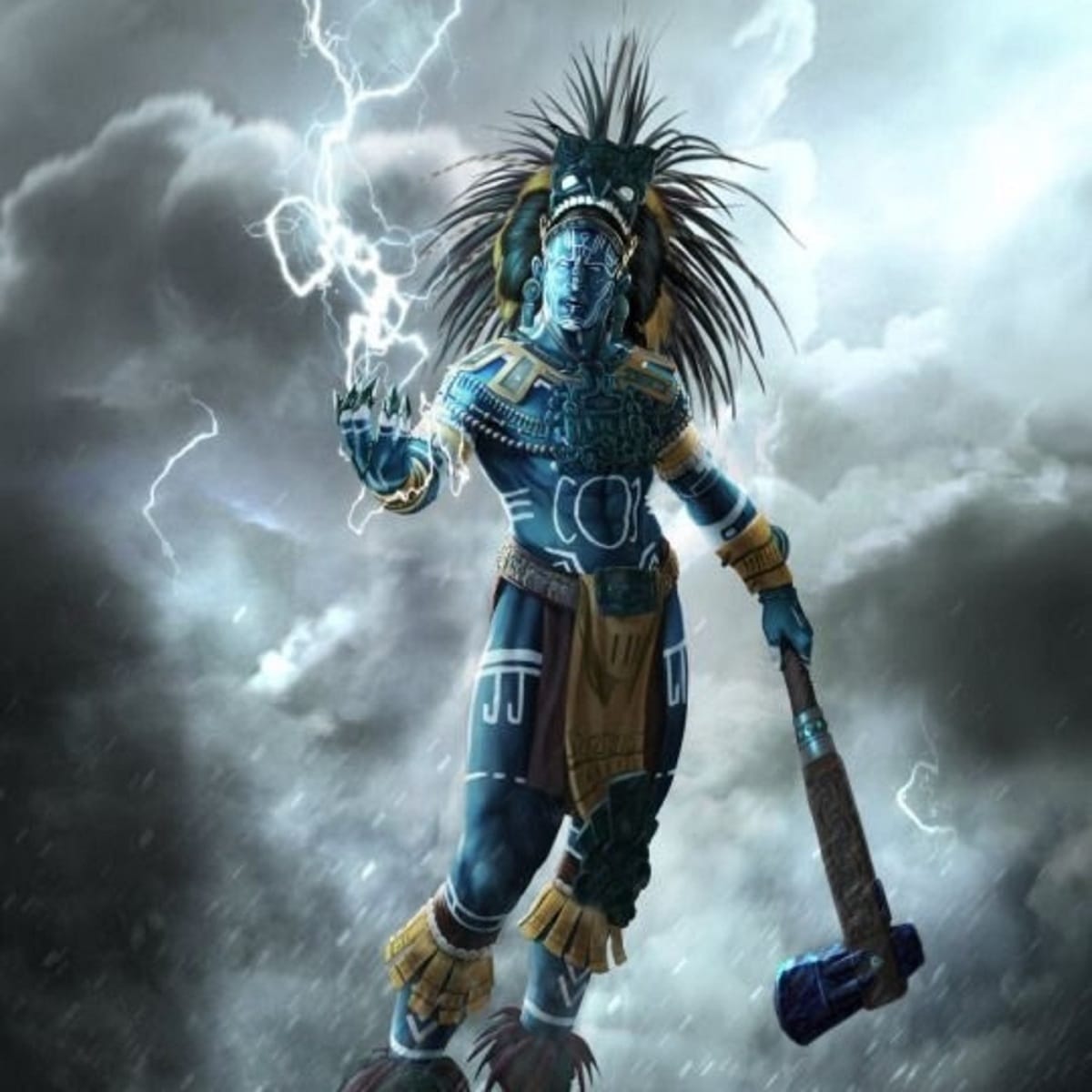
In mythology there is also the God of rain like other gods. Tlá-lock is the Aztec god of rain and one of the oldest and most common gods in Central America. Traloc is believed to live on the tops of mountains, especially those that are always covered by clouds; from there it sends a revitalizing rain to the people below.
In this article we are going to tell you everything you need to know about the God of rain, its characteristics and its history.
The god of rain

There are rain gods in most Mesoamerican cultures, and Traloc's origins date back to Teotihuacan and the Olmecs. The god of rain was called Chaac by the ancient Mayans and Cocijo by the Zapotecs of Oaxaca.
The rain god is one of the most important Aztec gods, ruling over water, fertility, and agriculture. Tlaloc is in charge of monitoring crop growth, especially corn growth, and the regularity of the seasons. Ruled the 13-day sequence in the 260-day ritual calendar from the day of Ce Quiauitl (rain). Traloc's concubine is Chalchiuhtlicue (Jade Her Skirt) who is in charge of freshwater lakes and streams.
Archaeologists and historians believe that emphasizing this famous god is a way for Aztec rulers to legitimize their rule in the region. For this reason, built a Tlaloc temple on top of the Great Temple of Tenochtitlan, next to the temple dedicated to the patron saint of the Aztecs Vizshiropochtli.
Sanctuary in Tenochtitlan

The Tlaloc Refuge in the Templo Mayor represents agriculture and water; the Huitzilopochtli temple represents war, military conquests and tributes… it isThese are the two most important temples in your capital.
The pillars of the Temple of Traloc are engraved with the symbols of Traloc's eyes and painted with a series of blue bands. The priest who cares for the sanctuary is Quetzalcoatl, one of the high priests of the Aztec religion. Many offerings related to this shrine have been found, including aquatic animal sacrifices and jade artifacts related to water, ocean, fertility, and the underworld.
The god of rain in the Aztec sky

Tlaloc was aided by a group of supernatural creatures called Tlaloques, who provided rainwater for the land. In Aztec mythology, Tlaloc is also the ruler of the third sun or world dominated by water. After the Flood, the third sun ended and humans were replaced by animals such as dogs, butterflies, and turkeys.
In the Aztec religion, Traloc ruled the fourth heaven or paradise, called Traloc, the «land of Traloc». This place is described in Aztec literature as a paradise with lush vegetation and a perennial spring, ruled by gods and people of Tlaloc. Tralocan is also the afterlife destination for those who died violently from water-related causes, as well as newborns and women who died in childbirth.
The most important ceremony dedicated to Traloc is called Tozoztontli and takes place at the end of the dry season, in March and April. The purpose is to ensure adequate rainfall during the growing season.
One of the most common rituals performed in this ritual is the sacrifice of children, and their crying is believed to be beneficial for obtaining rainwater. The tears of the newborn have a close relationship with the town of Tralocan, pure and precious.
The sacrifices found at the Temple Mayor in Tenochtitlán included the remains of approximately 45 children who died in memory of Traloc. The age of these children ranges from 2 to 7 years, but most of them were male. This is an unusual ritual deposit, and Mexican archaeologist Leonardo López Luján claimed that during the drought of the mid-XNUMXth century, the sacrifice was made specifically to appease La Locke.
Mountain sanctuary
In addition to the ceremony held at the Templo Mayor Azteca, people also found offerings to Tlaloc in various caves and mountain peaks. Tlaloc's holiest sanctuary is located on top of an extinct volcano, Tlaloc Mountain, east of Mexico City. Archaeologists investigating atop the mountain have identified the architectural remains of the Aztec temple, which appears to be aligned with the Tlaloc shrine in the Templo Mayor.
The sanctuary was enclosed in a fence, and each Aztec king and his priest performed a pilgrimage and sacrifices every year. The image of Tlaloc is one of the most representative and recognizable images of Aztec mythology, similar to the god of rain in other Mesoamerican cultures. It has large bulging eyes, and its outline is formed by two snakes that meet in the center of the face to form a nose.
He still has large teeth hanging in his mouth and his upper lip sticks out. He is often surrounded by raindrops and his assistant Tlaloques. He often holds a long scepter in his hand, the tip of the scepter representing lightning and thunder. His images often appear in Aztec books (called manuscripts), as well as in frescoes, sculptures, and Koba incense burners.
Celebrate Atlcahualo from February 12 to March 3. Dedicated to the tlaloque, this score involves the sacrifice of children on top of the sacred mountain. The children are beautifully decorated and dressed in the style of Tlaloc and Tlaloque. On a stretcher full of flowers and feathers, surrounded by dancers, they were transported to the sanctuary with their hearts broken by the priest. If these children cry on the way to the shrine, their tears are seen as a sign of impending rain. At each Atlcahualo festival, seven children are sacrificed around Lake Tescoco in the Aztec capital. They are slaves or second sons of the nobles. The Tozoztontli festival also involves the sacrifice of children. During this festival sacrifices are made in caves.
I hope that with this information you can learn more about the God of rain and his history.